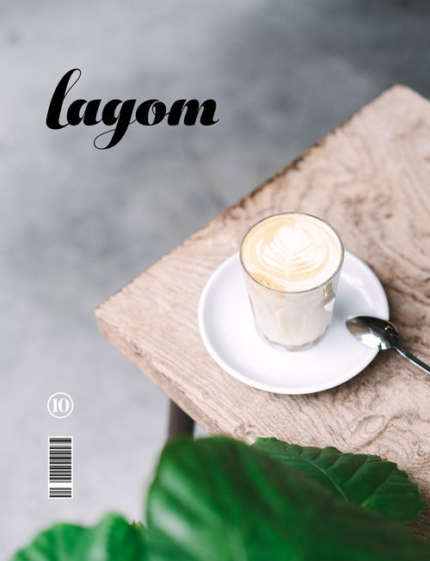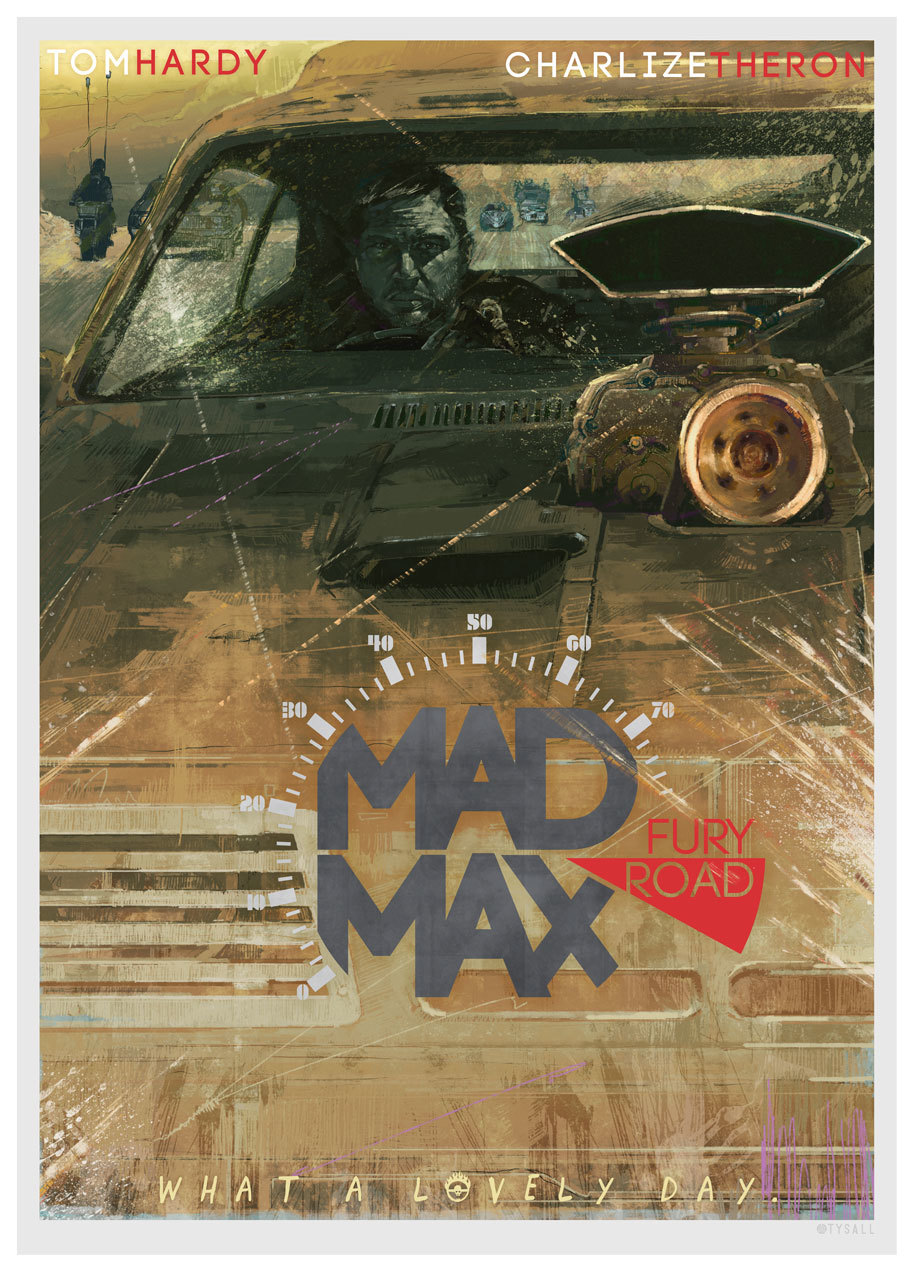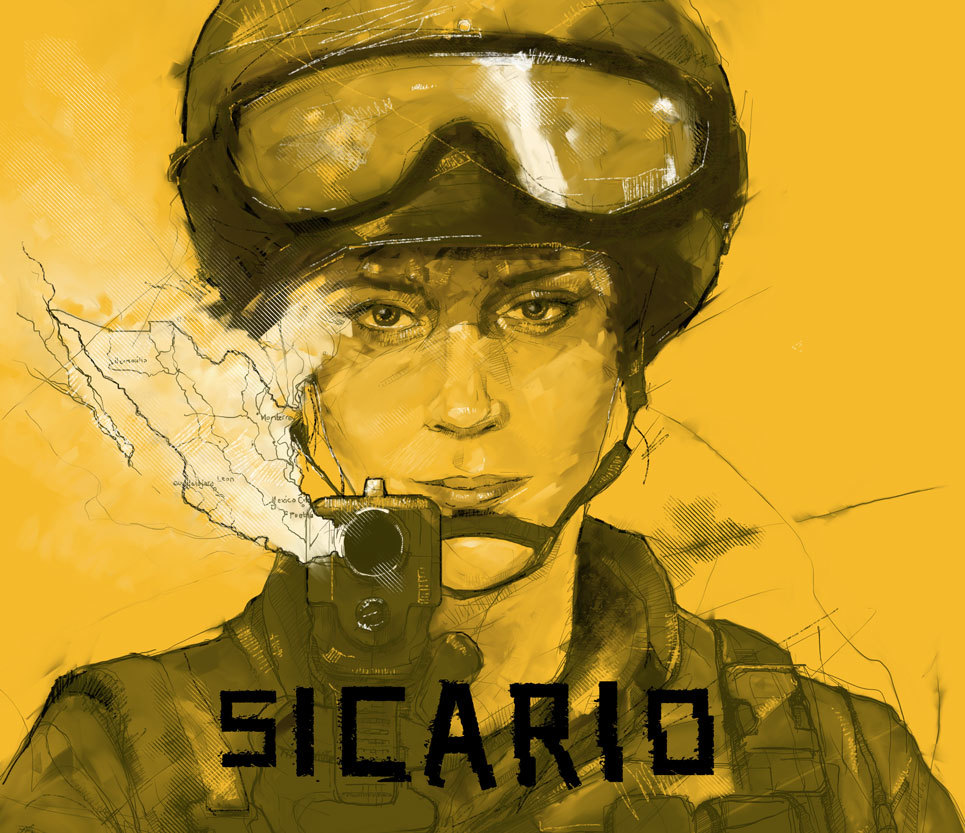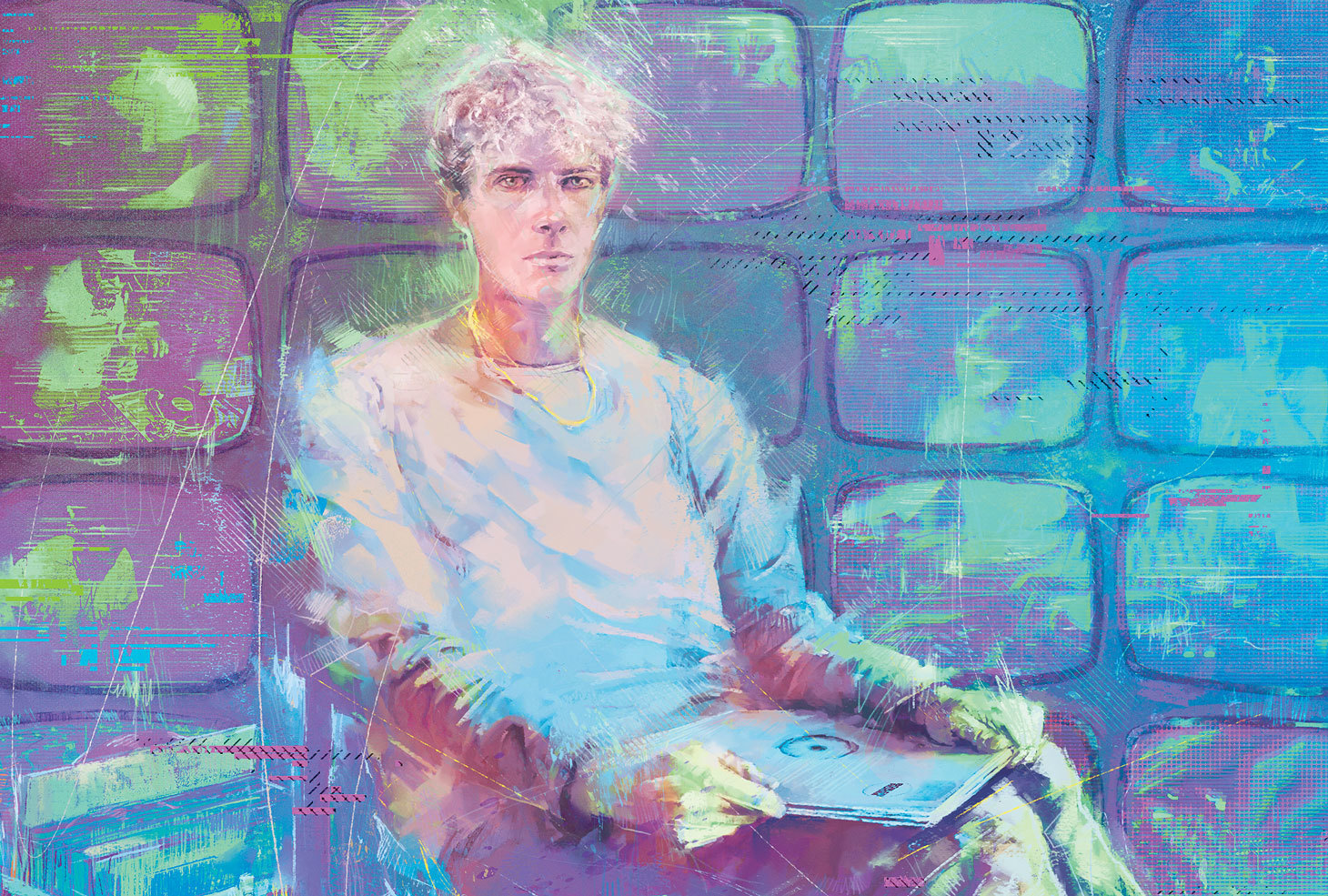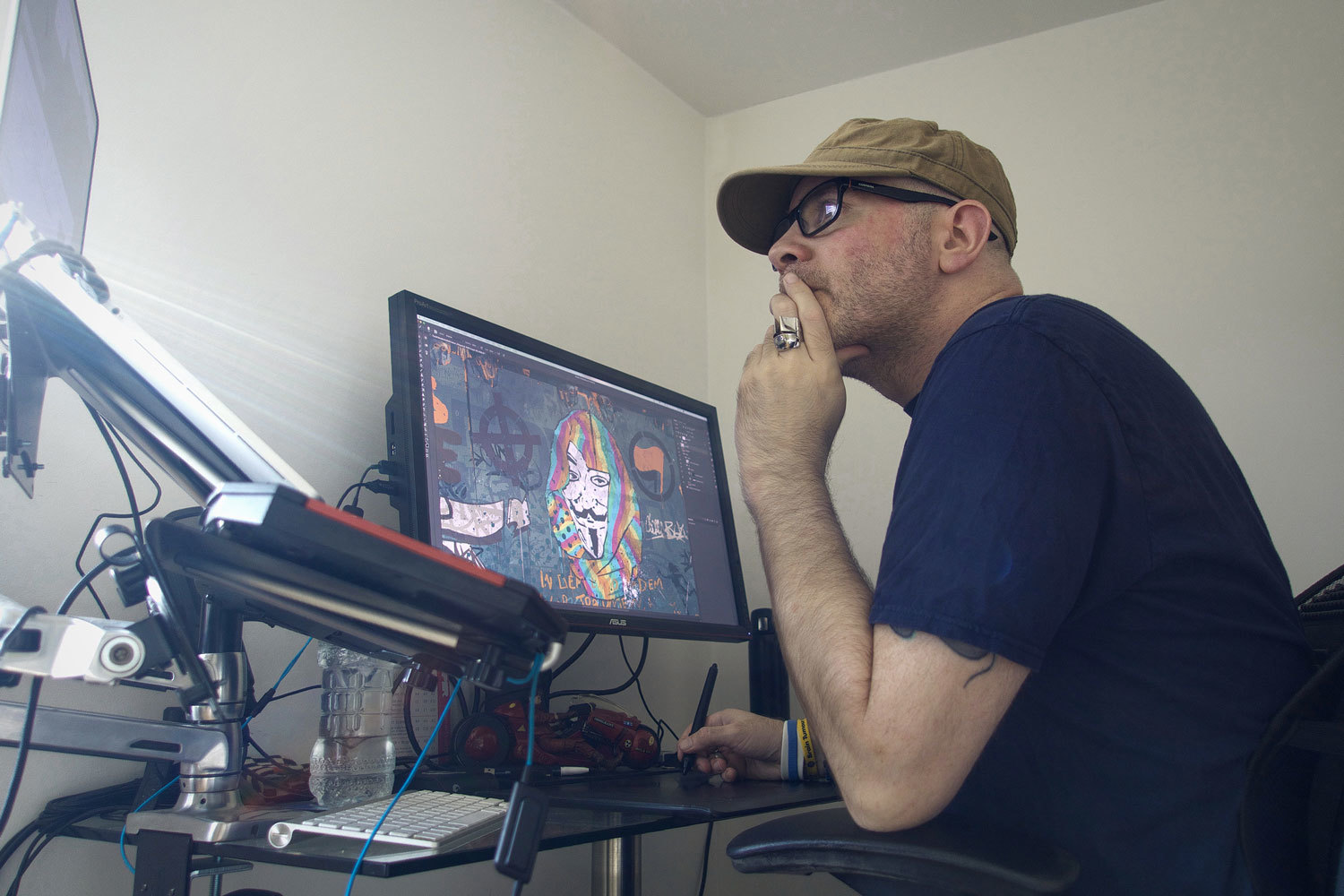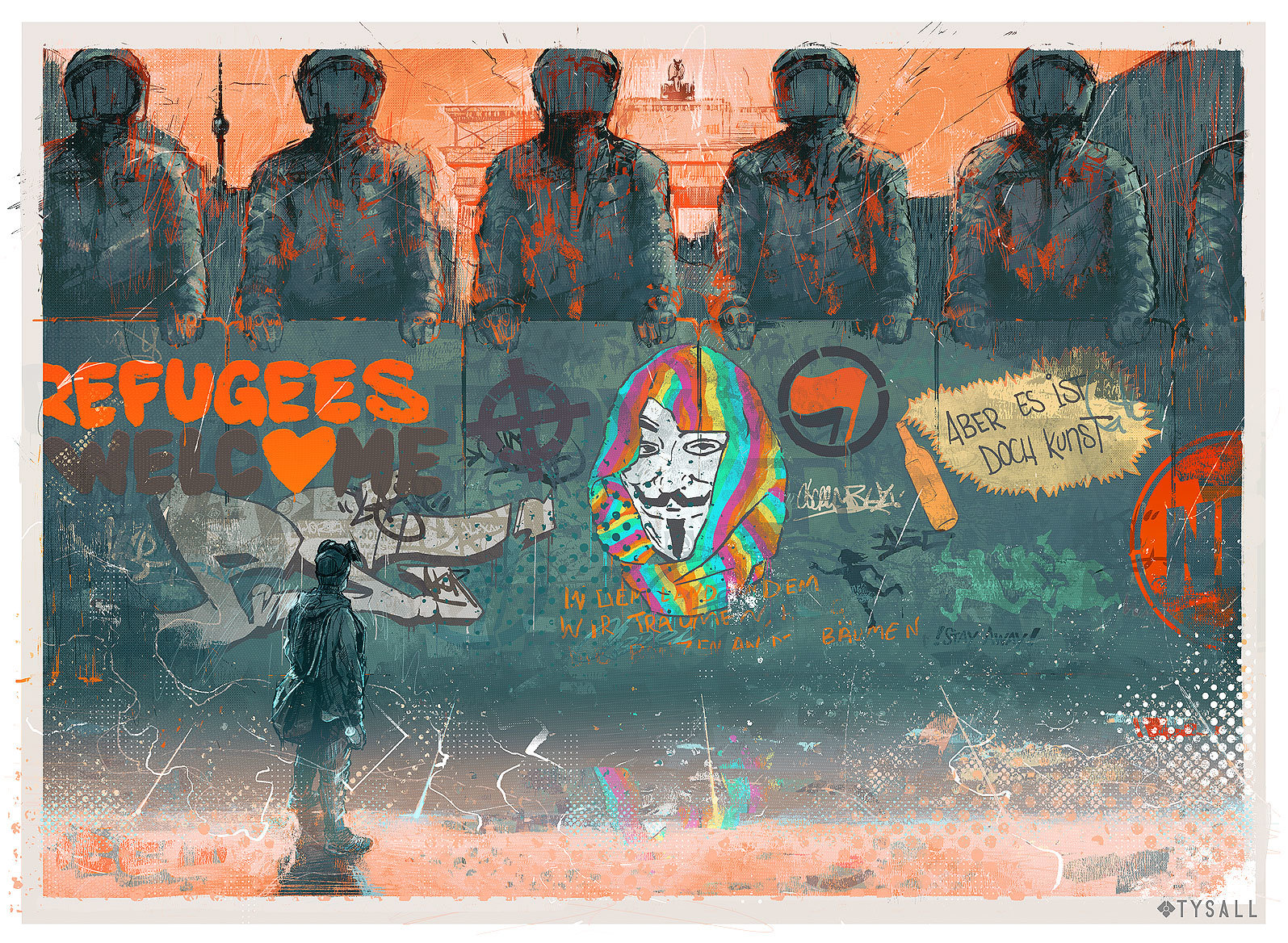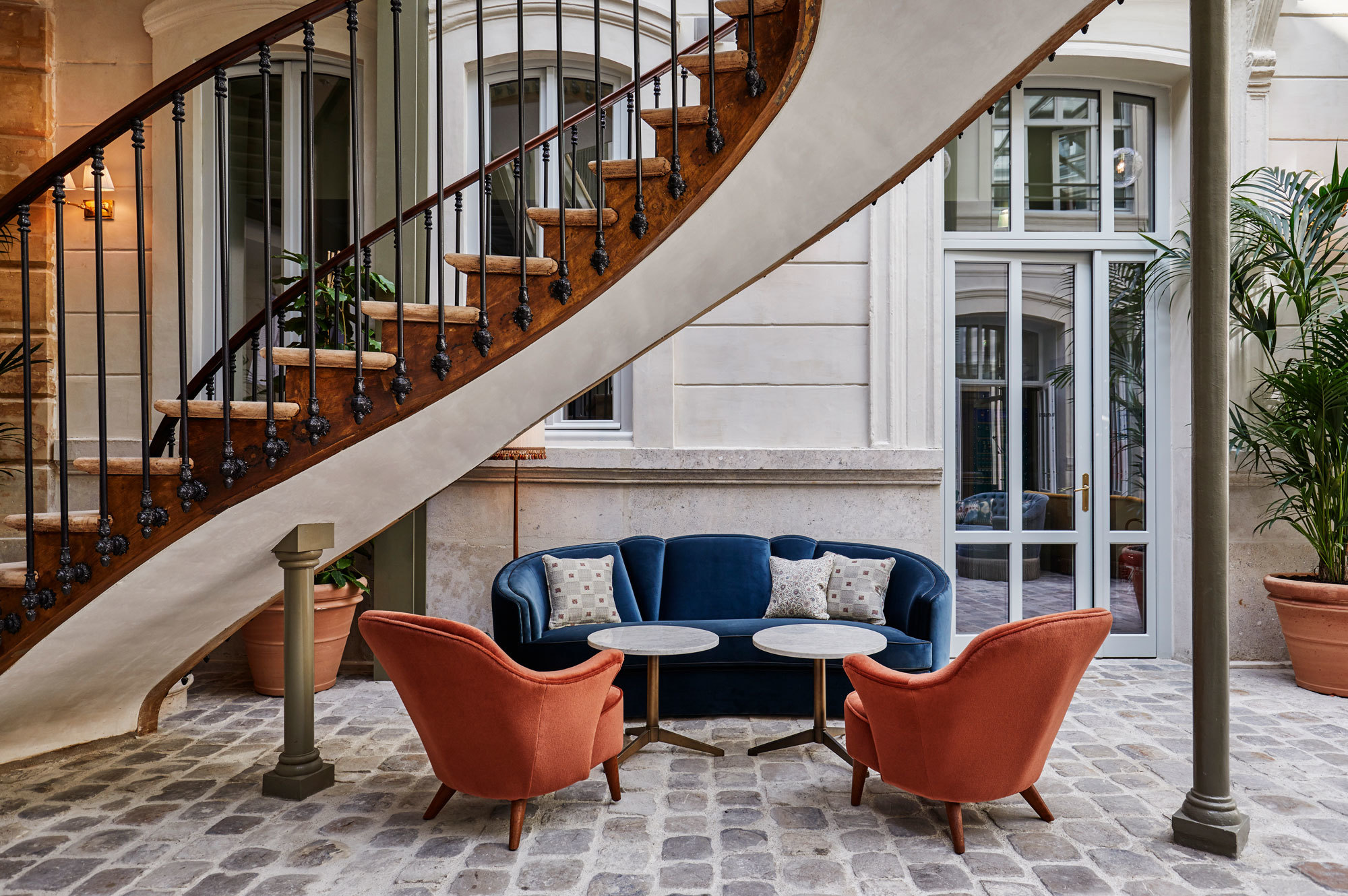Artist Q&A: Paul Tysall
August 08, 2016
Paul Tysall – who has recently traded in job security for the rollercoaster world of freelancing – gives a refreshingly honest account of his experience working as an illustrator.
Tell us about your background – have you always been an artist?
After I finished my studies, which focused on graphic design then illustration, I ended up working as an editorial designer. I knew that I wanted to be involved in magazines on some level, and designing seemed the more accessible route. Plus, after doing six years of higher education, I was keen to get a paid job in the world of grown ups. The plan was fairly simple: get a job as a designer in magazine publishing, get a couple of years under my belt while learning about the industry from the inside, whilst at the same time forming relationships with my future illustration client base, then leave to become a freelance illustrator. Twenty years on and I’m finally putting that plan in to effect.
How does your client work differ from your personal work?
There are no major differences in terms of technique and subject matter; every personal piece I put out into the world usually has a market or client in mind – important when the byproduct of every new image is intended as self promotion. The only major difference is that the pressure is off when creating your own thing, although sometimes that can be more of a burden than a blessing.
Who would be your ideal client/project?
There are loads of brands out there I’d love to work for. That said, I think the dream gig would have to be something collaborative and narrative based. Maybe that’s a large project where I play a small part, like marketing art for TV or film. Equally, it could be something more intimate, working with a smaller group of people and taking on several aspects generating key art, producing graphic elements and art directing using all the different skills I’ve acquired to create something, using animated illustration, design and typography to craft a story in a unique way.
What does your typical creative process look like?
Once the idea and composition has been roughly established in the sketchbook, I move onto gathering reference material. The amount I need really depends on the kind of piece I’m doing; if I’m tasked with a portrait, I like to get several images of the subject, with different angles and lighting.
I’ve recently started to produce my under drawings in digital ink. I like to leave some of the marks in the final, as the line quality can look really strong. All the initial value work is generated with very loose marks, and I find this is the stage where you can really give an image some energy. Then it’s a case of using the established techniques of colourising in Photoshop to get the palette going, but I like to build up the colour manually. Along the way I’ll use textured Layer masks and scribbles, all intended to break the ‘too clean’ digital feel.
How much planning do you do on paper before beginning to create your artwork on screen?
Everything starts on paper. I love working digitally, and early on I wanted the entire process to be digital; but no app, tablet or software can beat a biro and a piece of paper. As someone who has written a fair amount of reviews and tested a lot of the digital art products on the market, I find there’s just something more fulfilling about developing ideas in a sketchbook. My sketchbook is my diary. Plus, I’m just not a big fan of how our tactile experiences are being reduced to swiping a finger over machined smooth surfaces.
What’s your studio set up?
Studio Tysall is the table in the corner of my living room. It’s fine for now. I get around the cabin fever by starting projects away from the studio: you can often find me up at Bristol Museum and Art Gallery – it’s a stunning building, plenty of room to think, and loads of inspiration.
Eventually I’d like to go nomadic, maybe for a few years. One of the main things about illustration I find appealing is that you really don’t need to stay in one place. It would be amazing to work out of Berlin for a while, which seems doable seeing as we’re part of the European... oh.
Do you have a favourite piece you've worked on?
Oh good lord no, I’m a very harsh critic... probably too harsh. I tend to like my work up until the moment I send it out to potential clients. That said, my latest image, A New Berlin Wall, was a very satisfying piece to work on. The process from idea to end product was quite fluid, and it really connected a lot of my personal traits into a single illustration. I wrote a brief explanation on its significance.
Who is your main source of inspiration?
In terms of illustrators, they are; Mark Smith, Mike McQuade, Sam Spratt, Tomer Hanuka, Victo Ngai, Rebecca Mock, Bill Sienkiewicz, Jock and Drew Struzan. When it comes to fine art; Jeremy Mann, Andrew Wyeth, Joseph Cornell and Robert Rauschenberg. But I find motivation and inspiration tends to come more from watching films or reading books, so as for directors and authors I’d include; Ridley Scott, Luc Besson, Richard K Morgan, Justin Cronin, Ernest Cline and Bukowski.
Have you ever suffered from creative block, and if so, what did you do to remedy it?
Creative block’s never really been an issue – there’s always something to get inspired about. There is always that moment at the start of a painting where I look at what I’ve got down and think, ‘this is just a mess...’ but I’ve learnt to push through that.
If anything, the most debilitating problem I suffer from is imposter syndrome. I know enough about the world of illustration to know how difficult it can be to get a foothold, but that doesn’t stop that creeping uncertainty that I’m just not good enough, that I’m wasting my time, and I should throw in the towel right this second. At moments like these I think about how much I’ve already invested in achieving my goals, the great feedback I’ve had, and the client work I’ve already been fortunate enough to create.
End of the day if I don’t make it – whatever that means nowadays – I’ve taken a craft I love and tried to make my own mark... or mess, I’m still not sure which it is.
